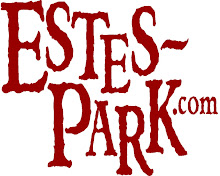First Signs of Spring in RMNP

April may be one of Rocky Mountain National Park's snowy months, but its also the beginning of spring. Once the first flowers start to bloom, no matter how much more snow we get it is spring in my mind. Generally the first flowers you can find above 8,000 ft. are the Early Buttercups. Their single bright yellow flower (about the size of dime) are often surrounded by mud and snow, eagerly awaiting the first insects to find them. Look closely and you will see a shiny yellow petal. Using starch under the yellow pigments, the flower petal flashes like a rescue mirror, hoping to catch the eye of a winged friend going by, in this case it is generally a fly. Few people are aware that flies are one of the most common pollinators in the world. Watch your step along the edges of trails and you may just see one of these tiny harbingers of spring.
Guest Blogger: Jared Gricoskie of Yellow Wood Guiding. Click here to find out more about Yellow Wood Guiding's Guided Tours through RMNP. You might even spot one of these spring beauties!
Labels: flowers, nature, RMNP, spring, yellow wood guiding


